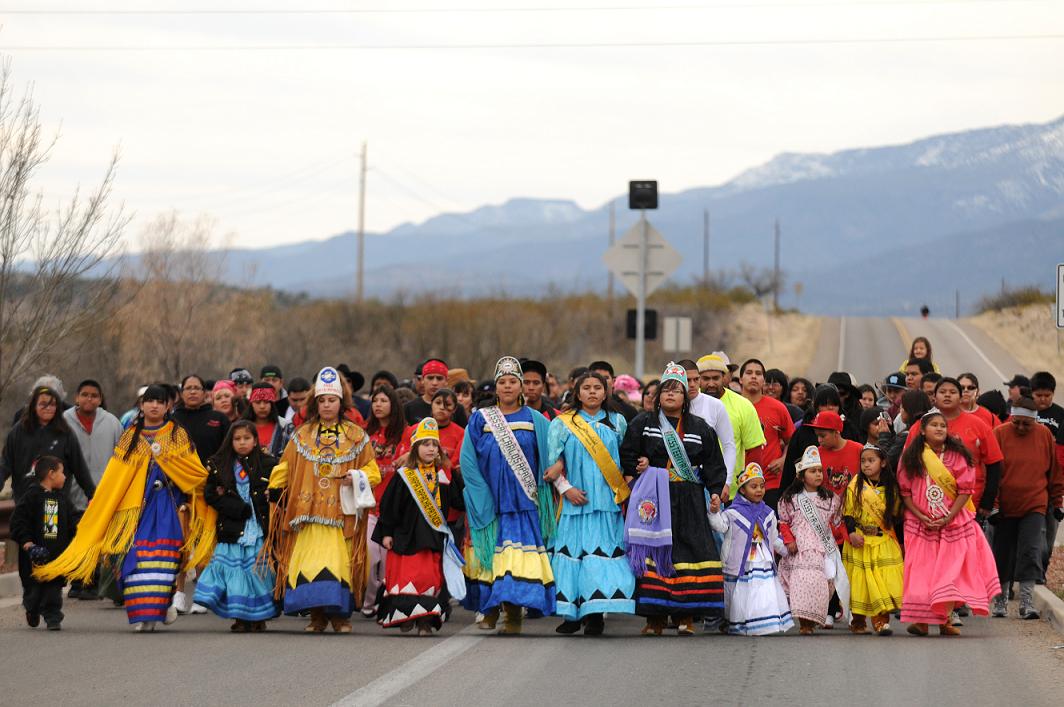The skies were overcast and the wind lent an occasional chill to the air, but spirits were warm Saturday, Feb. 26, as the members of the Yavapai-Apache Nation and their neighbors gathered to remember a much colder period of the region’s history.
Despite the solemn nature of the events behind the gathering, the day was a celebration as neighbors, friends and family caught up to share news of the present while remembering the past.
Yavapai-Apache Nation members march solemnly Saturday, Feb. 26, on Montezuma Castle Highway to commemorate the suffering the Yavapai and Apache peoples endured during their forced relocation from the Verde Valley to San Carlos. Exodus is observed every year.
The Yavapai and Apache, two distinct peoples who refer to themselves in the original tongue as the Wipuhk’a’bah and Dil’zhe’e, have called the Verde Valley home for years. The Yavapai trace their roots to sacred sites in the area; the Apache came to live here sometime later.
The Yavapai and Apache lived together. They had their differences at times, but those were overshadowed when both peoples were thrust together in hardship in the face of an external threat.
Intermarriage and common resistance against the forces that threatened their way of life have left the two tribes united as one political entity, the Yavapai-Apache Nation.
Regardless of who lived where and when, it only took about a decade after the first Anglo settlers started to move in for the destinies of the natives to change forever.
At first, the army, acting under executive order, tried to keep the Yavapai and Apache confined to a reservation in the area.
By 1875, that wasn’t enough for the powers that be. On
Feb. 27 of that year, the military forced around 1,500 Yavapai and Apache from their homes and started a forced march over 180 miles of rugged terrain to the military reservation at San Carlos.
The path was far from the easiest one; the people were forced to travel over unforgiving mountain passes and river crossings, much to the consternation of the natives and some of the soldiers tasked on this fateful escort mission.
Many died on the way; those who survived were kept from their homes for a quarter of a century. Only around 200 eventually made it back to the Verde Valley when they were allowed to leave San Carlos in 1900.
When they returned, they found their traditional lands had been taken over by the settlers. They did what they could and united. The groups found what land they could and eventually evolved into the modern Yavapai-Apache Nation.
The sacrifice of those who came before was a central theme of Saturday’s event, a reminder of what those earlier ones went through so today’s Yavapai and Apache could live in a land carved out through blood, sweat and tears.
The celebration and remembrance culminated at Veterans Memorial Park, but that event, filled with dancing, food, entertainment and reflection was just one aspect of the day’s festivities.
From a morning run to a walk down Montezuma Castle Highway to remember the march ancestors made 136 years ago and a sacred ceremony at Boynton Canyon, the entire day was designed as a tribute to those who came before and a pointed reminder for today’s tribal members to “never forget.”
